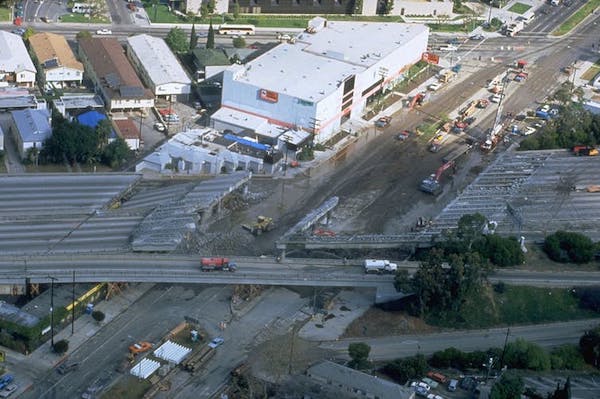natural disasters
See the following -
GeoMOOSE - The Open Source - Common Operating Picture Software
Yesterday's post pointed out there is a growing body of Free and Open Source Software for Geospatial (FOSS4G) that can be used for disaster preparedness and response. One such program is GeoMOOSE [...]. Read More »
- Login to post comments
Hack To Help The Philippines
The Philippines can take any help it can get right now, totally devastated last weekend by the typhoon that struck the island nation off the coast of Vietnam in the Pacific. While your immediate inclination may be to donate cash and be done with it – and no, this is not telling you not to donate – there are many other routes through which you can help the relief efforts. Saturday in D.C., one group will join together to help through hacking. Read More »
- Login to post comments
Who Are They Going To Blame?
Once the dust settles, or the flood water recedes (in this case), someone will conduct a root cause analysis to figure out why the emergency generator at NYU Langone Medical Center failed to operate during Hurricane Sandy when the Con Edison power supply was disrupted. Given that this investigation will involve two sectors of society (politics and health care) most characterized by a need to find someone to blame, some poor person at the hospital will be deemed to be the culprit. Read More »
- Login to post comments
#Sandy’s Lessons For Government Social Media
Genevieve Contey and David Miller gave a presentation Wednesday about their experience managing the National Oceanic and Atmospheric Association’s social media platforms during Hurricane Sandy. Read More »
- Login to post comments
3 Health IT Must-Haves For Natural Disaster Preparedness
Responding to disasters is something every healthcare institution needs to be ready for. From hurricanes to snowstorms to wildfires, having a plan in place and technology to back it up is critical to an effective response. Read More »
- Login to post comments
3 Reasons Why the US is Vulnerable to Big Disasters
 During the 2017 disaster season, three severe hurricanes devastated large parts of the U.S. The quick succession of major disasters made it obvious that such large-scale emergencies can be a strain, even in one of the world’s richest countries. As a complex emergency researcher, I investigate why some countries can better withstand and respond to disasters. The factors are many and diverse, but three major ones stand out because they are within the grasp of the federal and local governments: where and how cities grow; how easily households can access critical services during disaster; and the reliability of the supply chains for critical goods. For all three of these factors, the U.S. is heading in the wrong direction. In many ways, Americans are becoming more vulnerable by the day.
During the 2017 disaster season, three severe hurricanes devastated large parts of the U.S. The quick succession of major disasters made it obvious that such large-scale emergencies can be a strain, even in one of the world’s richest countries. As a complex emergency researcher, I investigate why some countries can better withstand and respond to disasters. The factors are many and diverse, but three major ones stand out because they are within the grasp of the federal and local governments: where and how cities grow; how easily households can access critical services during disaster; and the reliability of the supply chains for critical goods. For all three of these factors, the U.S. is heading in the wrong direction. In many ways, Americans are becoming more vulnerable by the day.
- Login to post comments
5 Humanitarian Crises Where Open Source Projects Aimed to Bring Stability Government Software
Natural disasters, epidemics, terrorism, and uprisings—the world awaits with bated breath for the situation to turn to normalcy for those directly and indirectly affected by these crises. Here are five crises where open source technologists have helped, in some way, to bring stability in these hostile regions. An annoyed user couldn’t fix his printer as the printer’s source code wasn’t available to users. This was the reason that led to the start of the open source movement...
- Login to post comments
6 Smartphone Apps To Help Fight Hurricane Sandy's Fury
If you live in the Northeastern United States and are bracing for Hurricane Sandy's wallop, your smartphone can become a handy tool if disaster strikes. Read More »
- Login to post comments
Academic Biomedical Research Community Should Take Action to Build Resilience to Disasters
 The academic biomedical research community should improve its ability to mitigate and recover from the impacts of disasters, says a new report from the National Academies of Sciences, Engineering, and Medicine. The consequences of recent disasters, from hurricanes to cyberattacks, have shown that the investments of the U.S. federal government and other research sponsors -- which total about $27 billion annually -- are not uniformly secure. The report recommends 10 steps that academic research institutions, researchers, and research sponsors should take to bolster the resilience of academic biomedical research.
The academic biomedical research community should improve its ability to mitigate and recover from the impacts of disasters, says a new report from the National Academies of Sciences, Engineering, and Medicine. The consequences of recent disasters, from hurricanes to cyberattacks, have shown that the investments of the U.S. federal government and other research sponsors -- which total about $27 billion annually -- are not uniformly secure. The report recommends 10 steps that academic research institutions, researchers, and research sponsors should take to bolster the resilience of academic biomedical research.
- Login to post comments
Air Force Deploys Air Tankers To Battle Arizona Forest Fires
The Air Force has deployed four C-130 aerial tankers to Arizona, where they stand ready to help battle major forest fires, including an uncontrolled and raging blaze 85 miles northwest of Phoenix that killed 19 firefighters. Read More »
- Login to post comments
Americans Focus On Responding To Earthquake Damage, Not Preventing It, Because They Are Unaware Of Their Risk
 On July 4 and 5, two major earthquakes, followed by several thousand smaller ones, struck Southern California. Their size and the damage they caused captured attention around the country. What tends to get much less notice from the public is what can be done to prevent catastrophic damage from big quakes. Had the epicenter of these latest large California earthquakes been closer to downtown Los Angeles, tens of thousands of apartment buildings could have been damaged or collapsed. Consequently, structural engineers are calling on legislators to prepare for and prevent earthquake damage by crafting new and improved building codes...
On July 4 and 5, two major earthquakes, followed by several thousand smaller ones, struck Southern California. Their size and the damage they caused captured attention around the country. What tends to get much less notice from the public is what can be done to prevent catastrophic damage from big quakes. Had the epicenter of these latest large California earthquakes been closer to downtown Los Angeles, tens of thousands of apartment buildings could have been damaged or collapsed. Consequently, structural engineers are calling on legislators to prepare for and prevent earthquake damage by crafting new and improved building codes...
- Login to post comments
Antibiotic-Resistant Diseases Pose 'Apocalyptic' Threat, Top Expert Says
Chief medical officer Dame Sally Davies tells MPs issue should be added to national risk register of civil emergencies Read More »
- Login to post comments
Asia Foundation At Google’s Big Tent On Open Data, Disasters
On July 2 in Sendai, Japan, nearly a year and a half after the tragic earthquake and tsunami devastated the region, The Asia Foundation will participate in a Google conference to examine using open data in disaster relief. [...] Read More »
- Login to post comments
Build Your Own Internet With Mobile Mesh Networking
Software can let smartphones, Wi-Fi routers, and other hardware link up without centralized Internet service. Read More »
- Login to post comments
California Could Be Hit by an 8.2 Mega-Earthquake, and It Would Be Catastrophic
 The magnitude 8.2 earthquake that ravaged southern Mexico on Sept. 7 was the largest to shake the country in nearly a century. Like California, Mexico is a seismically active region that has seen smaller quakes that have caused death and destruction. But the Sept. 7 temblor is a reminder that even larger quakes — while rare — do occur. Scientists say it’s possible for Southern California to be hit by a magnitude 8.2 earthquake. Such a quake would be far more destructive to the Los Angeles area because the San Andreas fault runs very close to and underneath densely populated areas...
The magnitude 8.2 earthquake that ravaged southern Mexico on Sept. 7 was the largest to shake the country in nearly a century. Like California, Mexico is a seismically active region that has seen smaller quakes that have caused death and destruction. But the Sept. 7 temblor is a reminder that even larger quakes — while rare — do occur. Scientists say it’s possible for Southern California to be hit by a magnitude 8.2 earthquake. Such a quake would be far more destructive to the Los Angeles area because the San Andreas fault runs very close to and underneath densely populated areas...
- Login to post comments